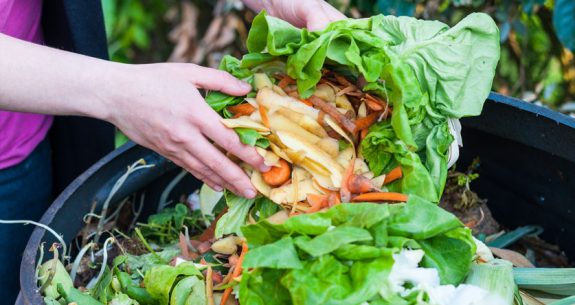Compost: a climate action solution

Composting’s role in the fight against climate change will be in focus during International Compost Awareness Week (ICAW), to be held from May 5-11 in Australia.
Amid the increasing frequency of extreme weather events such as flooding, droughts or bushfires, composting offers a practical, hands-on response to climate change mitigation where every household can join the global effort.
“As a community we can all contribute to a healthy planet by keeping food scraps away from landfill and one of the ways is through composting,” says Chris Rochfort, CEO of the Centre for Organic Research & Education (CORE).
“Composting can help reduce landfill methane emissions and restoring soil health, which will help build resilience to climate change, reduce reliance on synthetic fertilisers, and sequester carbon by removing it from the atmosphere.”
Composting can benefit the climate in many ways:
- Reduces the amount of organic waste that goes to landfill, which when disposed to landfill breaks down anaerobically and releases methane. Methane is a greenhouse gas with a global warming potential around 28 times that of carbon dioxide over a 100-year period.
- Improves drainage and aeration in the soil.
- Produces a nutrient-rich soil amendment.
- Retains soil moisture and reduces plant diseases/pests.
- Reduces heat island effect in urban areas.
- Increase resilience to the effects of climate change such as drought and extreme weather.
“By returning nutrients back to the soil through composting it improves plant health and promotes biodiversity. If we reduce and recycle waste, we can reduce greenhouse gas emissions at landfills, promote uptake of carbon dioxide by vegetation, and make our environment more resilient to the effects of a changing climate,” Mr Rochfort said.
He added: “Compost is one of nature’s essential building blocks that can solve so many of humanity’s current challenges from climate change, such as soil moisture loss and contaminated run-off and sediments entering our waterways.
“This is on top of compost being a fantastic amendment to add to soils to assist plant growth, nutrient retention and storing carbon. There’s no other product that can fulfill as many functions as compost can.
“Urban communities in particular generate massive amounts of food organics and garden organics (FOGO). As a community we need to participate in FOGO recovery systems where these wastes are processed into compost that adds valuable nutrients to the soil. This is good news for healthy food, future water supplies, environmental wellbeing, and human resilience.”
ICAW is a week during which Australians are encouraged to promote the importance and benefits of composting in their local communities. CORE, a public charity, has been championing this international awareness campaign exclusively in Australia for the past 19 years. ICAW has contributed to reducing organic waste going to landfill and at the same time improving biodiversity in soils and building up resilience to extreme weather events.
ICAW thanks sponsors of this year’s event, with Platinum sponsors comprising the Queensland Department of Environment, Science and Innovation, Penrith City Council and Northern Sydney Regional Organisation of Councils; Gold sponsor is the NSW Environment Protection Authority (EPA); and Bronze sponsor is Ku-ring-gai Council in northern Sydney.
Highlights
• International Compost Awareness Week (ICAW) to be held from May 5-11, 2024
• Spotlight on composting’s role in household fight against climate change
• Nationwide event promotes benefits of composting in local communities
Like what we do at The AIMN?
You’ll like it even more knowing that your donation will help us to keep up the good fight.
Chuck in a few bucks and see just how far it goes!
Your contribution to help with the running costs of this site will be gratefully accepted.
You can donate through PayPal or credit card via the button below, or donate via bank transfer: BSB: 062500; A/c no: 10495969